Status Under construction Location Midtown Manhattan Roof 397 m Owner SL Green Realty Estimated completion 2020 Architect Kohn Pedersen Fox | Type Supertall skyscraper Country United States Antenna spire 427 m Construction started 2016 Floor count 57 | |
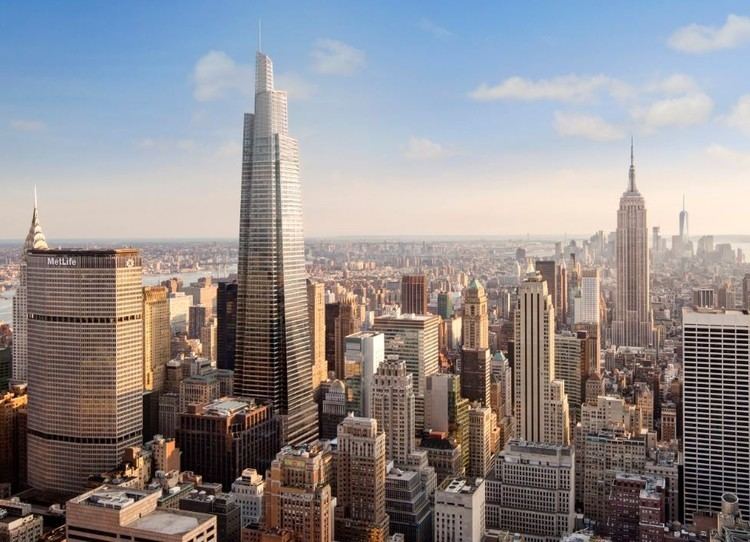 | ||
Address One Vanderbilt Avenue
New York, NY 10017 Floor area 1,750,212 sq ft (162,600.0 m) | ||
One vanderbilt demolition
One Vanderbilt (also One Vanderbilt Place) is a skyscraper under construction in New York City on the corner of 42nd Street and Vanderbilt Avenue in midtown Manhattan, New York City. Proposed by New York City mayor Bill de Blasio and developer SL Green Realty as part of a planned Midtown East rezoning, the tower would stand next to Grand Central Terminal.
Contents
- One vanderbilt demolition
- One vanderbilt revive by neymarc brothers
- Planning
- Construction begins
- Architecture
- References

When completed in 2020, the 57-floor, 1,600,000-square-foot (150,000 m2) skyscraper's roof will be 1,301 feet (397 m) high and its spire will be 1,401 feet (427 m), making it the city's second-tallest building.
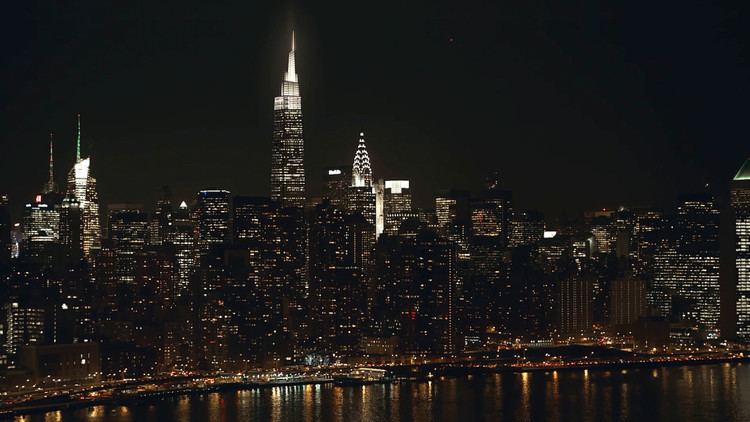
One vanderbilt revive by neymarc brothers
Planning
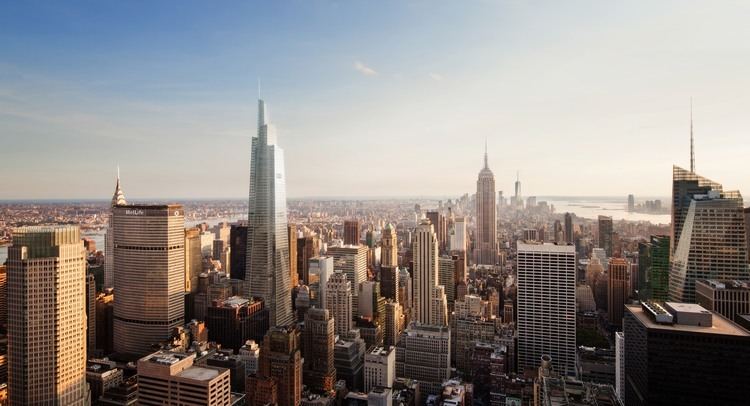
In the early 2000s, SL Green Realty began looking at sites in Midtown Manhattan to build a new skyscraper for office use. This request for office space would become part of a general trend where Manhattan office space increased 10% from 2000 to 2016. It began buying buildings on the block bounded by Vanderbilt Avenue, 42nd Street, Madison Avenue, and 43rd Street (known as Terminal City).
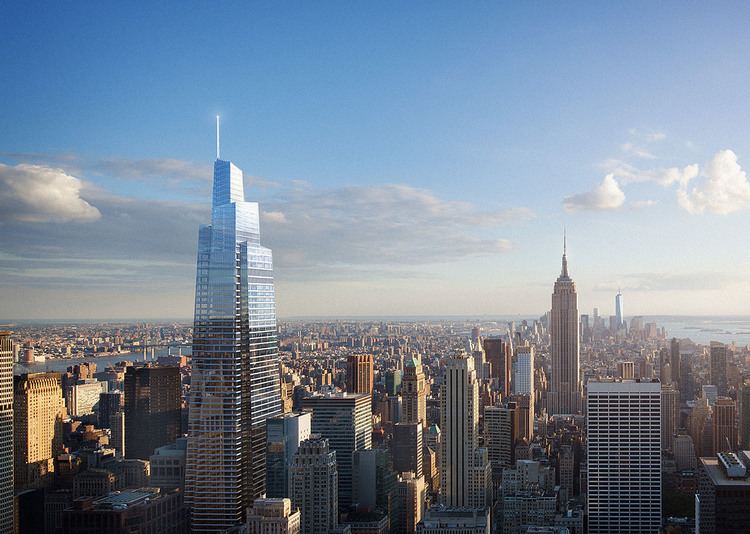
As part of the administration of Mayor Michael Bloomberg, the area around Grand Central Terminal was to be redeveloped, with multiple skyscrapers built in eastern Midtown. This entailed rezoning the 73 blocks of the neighborhood directly around the terminal. However, Bloomberg's plans for a district of new high-rises were rejected in November 2013 because of concerns from residents, preservationists, and local politicians that the influx of office workers to the area could disrupt the area's quality. The area was rezoned anyway in September 2013. Plans for the One Vanderbilt skyscraper were released in May 2014. The skyscraper was initially to be 65 stories high, and the proposal came with transit improvements to Grand Central as well as a new 14,000-square-foot (1,300 m2) pedestrian area on Vanderbilt Avenue between 42nd and 43rd Streets.
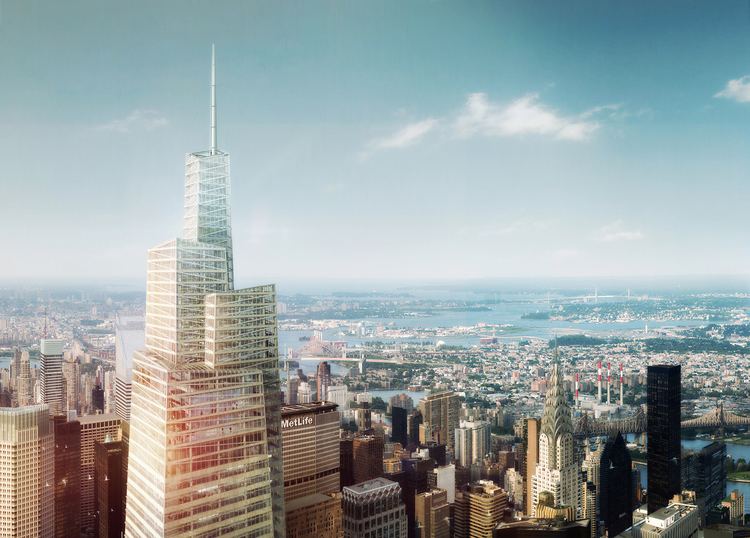
In July 2014, there was a dispute with Grand Central Terminal's owners over air rights, and the terminal's lawyers threatened to sue for $1 billion. That lawsuit was settled by August 2016.
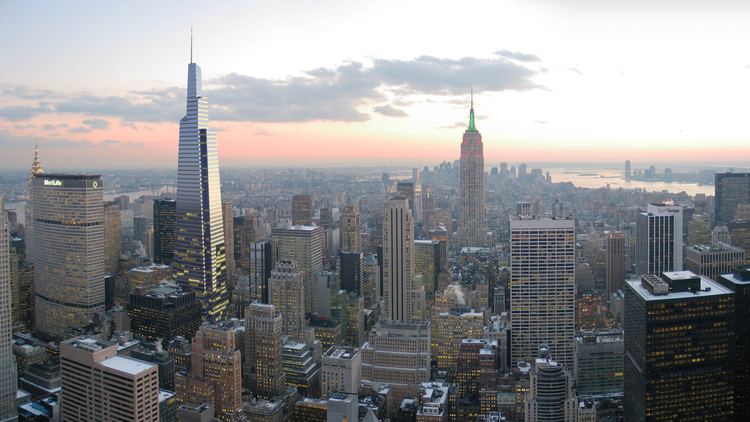
On September 24, 2014, Andrew Penson, the owner of Grand Central Terminal, made an offer of $400 million in exchange for building One Vanderbilt, proposed as a 1,500-foot (460 m), 67-story building at the time. SL Green would spend $210 million to build transportation improvements for the subway and commuter rail stations below. Penson would sell 1.3 million square feet of air rights, which came with the station when he bought it in 2006. The floor area, which he bought at $61 per 1 square foot (0.093 m2), would be nearly 10 times as much, at $600 per square foot, for the same amount of area in September 2014. SL Green rejected the offer as a "publicity stunt", because in its September 2014 proposal to the city, for $400 per square foot, SL Green wanted to build a tower twice as big as the zoning rules permitted.
By September 2014, few details were known about the construction timeline. A projected completion date of 2020 was revealed in December 2014.
In February 2015, Vanderbilt Avenue, between 42nd and 47th Streets, was rezoned under the Vanderbilt Corridor Rezoning Text Amendment, which allows redevelopment on the corridor.
Construction begins
In 2015, demolition at the site of One Vanderbilt began, starting the construction process of the skyscraper. The buildings that were demolished were built around the same time as Grand Central, albeit unremarkable-looking and unimportant to the station's function. The 18-story Vanderbilt Avenue Building, a Warren and Wetmore-designed structure at 51 East 42nd Street, opened as a six-story office complex in 1902 and expanded in the 1920s. It had a two-story Modell's store that sold sport-related items. The Carrère and Hastings-designed Liggett Building, at Madison and 42nd, opened in 1922. One block north, the Prudence Bond & Mortgage Building at Madison and 43rd, where Governor Al Smith once had gubernatorial campaign headquarters, dates to 1923. Two small structures along 43rd Street respectively housed "an Irish pub and a T.G.I. Friday's."
The official groundbreaking occurred on October 18, 2016, in an event attended by Mayor Bill de Blasio as well as several SL Green executives. By 2017, foundation laying should be completed, with the full building expected to be open in 2020.
Architecture
The building would take up a block bounded by Madison Avenue, Vanderbilt Avenue, and 42nd and 43rd Streets. Air rights from 110 East 42nd Street, the former Bowery Savings Bank building, would need to be transferred to One Vanderbilt. One Vanderbilt is being designed by Kohn Pedersen Fox. The 57-floor, 1,600,000-square-foot (150,000 m2) skyscraper's roof will be 1,301 feet (397 m) high and its spire will be 1,401 feet (427 m), making it the city's third-tallest building, after One World Trade Center and the Central Park Tower – and making it taller than the nearby Chrysler Building. Upon completion, it would be among the world's 30 tallest skyscrapers. TD Bank has signed on as an anchor tenant for the building, operating within a ground-floor space of 200,000 square feet (19,000 m2). The total cost of the building would exceed $3 billion.
The top 58 floors will be designated as 1,700,000 square feet (160,000 m2) of "Class A" office space. There will be fewer stories in One Vanderbilt than in other skyscrapers of similar height because each floor will have a ceiling that is 14.6 to 20 feet (4.5 to 6.1 m) high. There is also to be a 30,000-square-foot (2,800 m2) "world-class dining" area for tenants.
One Vanderbilt's facade and design is intended to integrate with Grand Central, across the street. It is set 10 feet (3.0 m) back from the street to allow better views of Grand Central, and the open spaces in One Vanderbilt will span up to 105 feet (32 m) high. The base would include a 4,500 square feet (420 m2) lobby. Its glass facade was described as having terra-cotta in the design, which "would counter the existing office buildings on Madison Avenue and make a connection—a 'selective recall'—to Grand Central." On the bottom few floors, the top section of the facade slopes upward, while the bottom section slopes downward, creating a "diagonal wedge" so that the lobby area on Vanderbilt Avenue (facing Grand Central) would have a ceiling sloping from 50 to 110 feet (15 to 34 m) from west to east.
The new building would also coincide with the MTA's East Side Access project, and station improvements due to One Vanderbilt's construction would provide extra capacity for over 65,000 new passengers going into the New York City Subway at Grand Central–42nd Street. The improvements include an underground connection between Grand Central Terminal and One Vanderbilt; new mezzanines and exits for the subway station; three new stairways to each of the Lexington Avenue Line platforms (along the 4 5 6 <6> trains); reconfiguration of columns supporting the nearby Grand Hyatt New York hotel; and a commuter waiting room in the building's lobby. This would directly result in additional capacity for the subway station, with 4,000 to 6,000 more subway passengers per hour being able to use the station. These improvements would cost over $200 million. Outside, Vanderbilt Avenue between 42nd and 43rd Streets would become pedestrian-only. The MTA mandated the station improvements in exchange for allowing the tower's construction. In 2015, SL Green gave $220 million toward the building's construction, of which two-thirds of the money would be used for station redesign; this marked the largest private investment to date to the New York City Subway system. As part of the station construction, 40% of the basement of the Grand Hyatt New York would be destroyed in order to make room for the expansion of the subway mezzanine, as well as two new subway entrances in the One Vanderbilt building itself.
The building is advocated for by the Landmarks Preservation Commission due to its proposed environmentally friendly, Leadership in Energy and Environmental Design-conforming model. New York Magazine described One Vanderbilt as a rare "civic-minded Goliath," in that while other skyscrapers are usually built in a design that maximizes profit, One Vanderbilt's base is designed for easier pedestrian and transit access in the nearby area.
